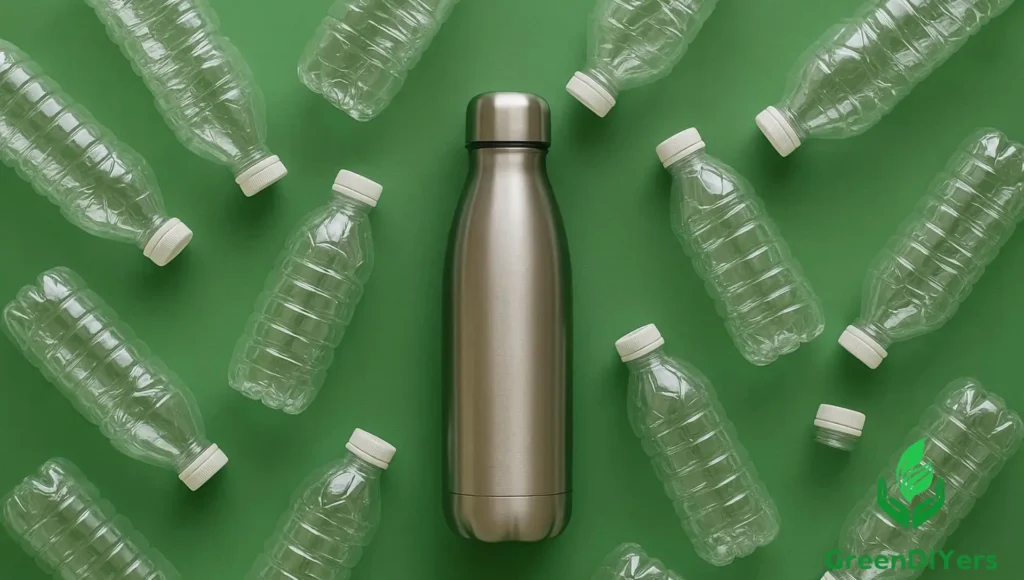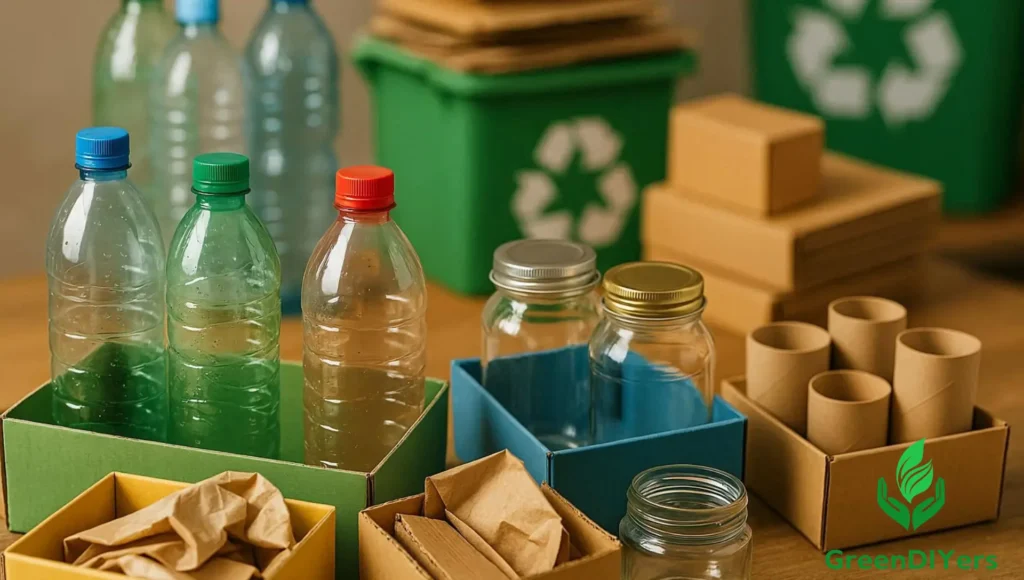You probably grabbed a plastic bottle today without giving it much thought. Maybe it was your morning water, a sports drink after your workout, or that convenient grab-and-go juice from the corner store. But here’s the thing – that simple plastic bottle carries a much bigger story than most of us realize.
With over 1 million plastic bottles purchased every minute globally, these ubiquitous containers have become both a convenience and a concern. While basic information about plastic bottles is everywhere, what you really need is actionable knowledge that helps you make informed decisions about your health, your wallet, and our planet.
This comprehensive guide goes beyond the surface-level facts you’ll find elsewhere. We’re diving deep into the environmental impact, health considerations, recycling realities, creative reuse options, and sustainable alternatives that can transform how you think about every plastic bottle that crosses your path.
Ready to become a more conscious consumer? Let’s explore what you really need to know about plastic bottles in today’s world.
Table of Contents
Section 1: The Environmental Footprint of Plastic Bottles (The Real Story)
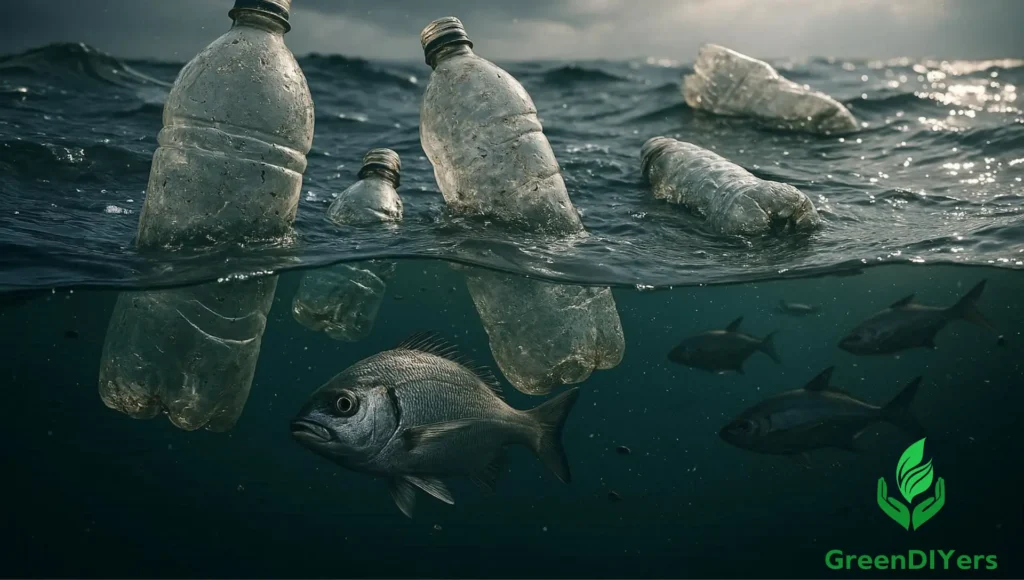
The Journey from Oil to Ocean
Every plastic bottle begins its life as crude oil. It takes approximately 3 liters of water and 1.5 liters of oil to produce a single 1-liter plastic bottle – before it even gets filled with your beverage. When you consider that Americans alone use about 50 billion plastic bottles annually, we’re talking about massive resource consumption.
But the environmental impact doesn’t stop at production. The lifecycle of a plastic bottle includes:
Production Phase: Manufacturing a single plastic bottle generates roughly 82 grams of CO2 emissions – that’s equivalent to driving about half a mile in an average car.
Transportation: Shipping bottled water can involve moving products thousands of miles, adding significant carbon emissions compared to turning on your tap.
Disposal Dilemma: Here’s where things get really concerning. While recycling rates vary by region, only about 29% of plastic bottles get recycled in the United States. The rest? They’re headed to landfills, incinerators, or worse – our oceans.
The Microplastic Crisis You Can’t See
Perhaps the most alarming aspect of plastic bottle pollution is what happens when they break down. Unlike organic materials, plastic bottles don’t biodegrade – they photodegrade, breaking into smaller and smaller pieces over 450+ years.
These microscopic plastic fragments, called microplastics, are now found everywhere:
- In our drinking water (both tap and bottled)
- In sea salt and seafood
- In agricultural soil where food is grown
- Even in remote areas like Arctic ice
Recent studies have detected microplastics in human blood, lungs, and placentas. While research on health effects is ongoing, the widespread contamination is undeniable.
By the Numbers: Environmental Impact
- Energy consumption: It takes 2,000 times more energy to produce bottled water than tap water
- Waste generation: The equivalent of 17 million barrels of oil are used annually just to produce plastic bottles for the U.S. market
- Ocean pollution: An estimated 8 million tons of plastic enter our oceans yearly, with bottles being a significant contributor
Section 2: Health & Safety – What You Need to Know About Your Bottles
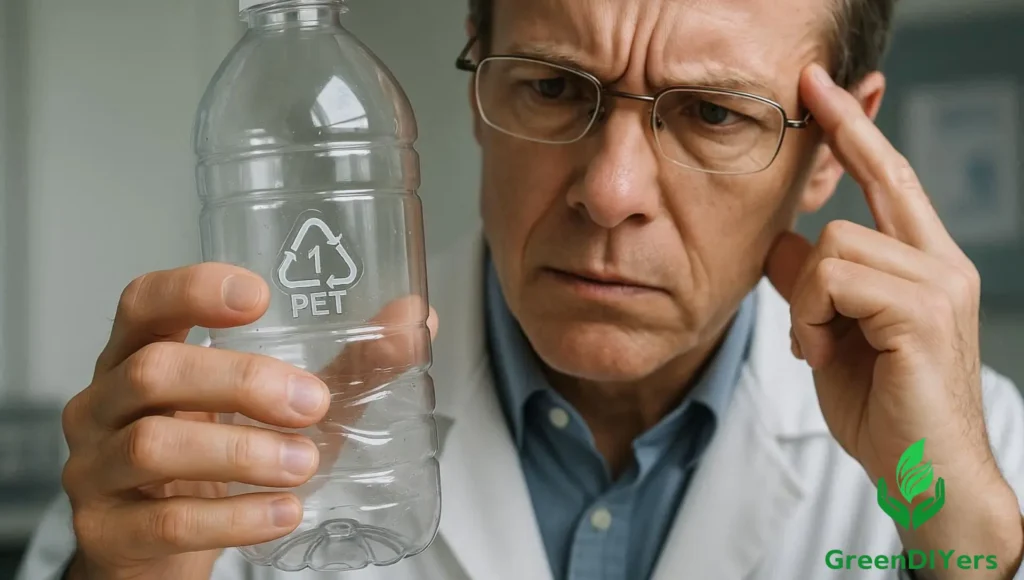
Decoding the Plastic Bottle Mystery
Not all plastic bottles are created equal. That little number inside the recycling symbol on your bottle isn’t just for recycling – it tells you exactly what type of plastic you’re dealing with and its potential health implications.
#1 PET (Polyethylene Terephthalate)
- Most common for water and soda bottles
- Generally considered safe for single use
- Can harbor bacteria if reused without proper cleaning
- May leach antimony with repeated use or heat exposure
#2 HDPE (High-Density Polyethylene)
- Found in milk jugs and thicker water bottles
- Considered one of the safest plastics
- Good for reuse when properly maintained
#3 PVC and #6 PS
- Less common in bottles, but worth avoiding when possible
- May contain more concerning chemicals
#7 PC (Polycarbonate) and Others
- May contain BPA (though many are now BPA-free)
- Check labels carefully
The BPA and Phthalates Discussion
Bisphenol A (BPA) and phthalates have been hot topics in plastic bottle safety discussions. Here’s what current science tells us:
BPA: Originally found in some hard plastic bottles, BPA can mimic estrogen in the body. Most bottle manufacturers have moved away from BPA, but “BPA-free” doesn’t automatically mean chemical-free – it might contain similar compounds like BPS or BPF.
Phthalates: These chemicals make plastic flexible and are more commonly found in food packaging than bottles. However, they can still be present and may affect hormone systems.
Safe Handling Practices
Want to minimize potential risks? Follow these evidence-based guidelines:
Temperature Matters: Never leave plastic bottles in hot cars, direct sunlight, or dishwashers. Heat increases the likelihood of chemical migration into your beverage.
Reuse Wisely: If you’re reusing a plastic bottle:
- Wash thoroughly with warm, soapy water
- Air dry completely to prevent bacterial growth
- Replace when you notice scratches, cloudiness, or odors
- Limit reuse to a few times maximum
Know When to Say No: Avoid reusing bottles that contained anything other than water, and never use damaged bottles.
Section 3: Mastering Plastic Bottle Recycling (Beyond the Bin)
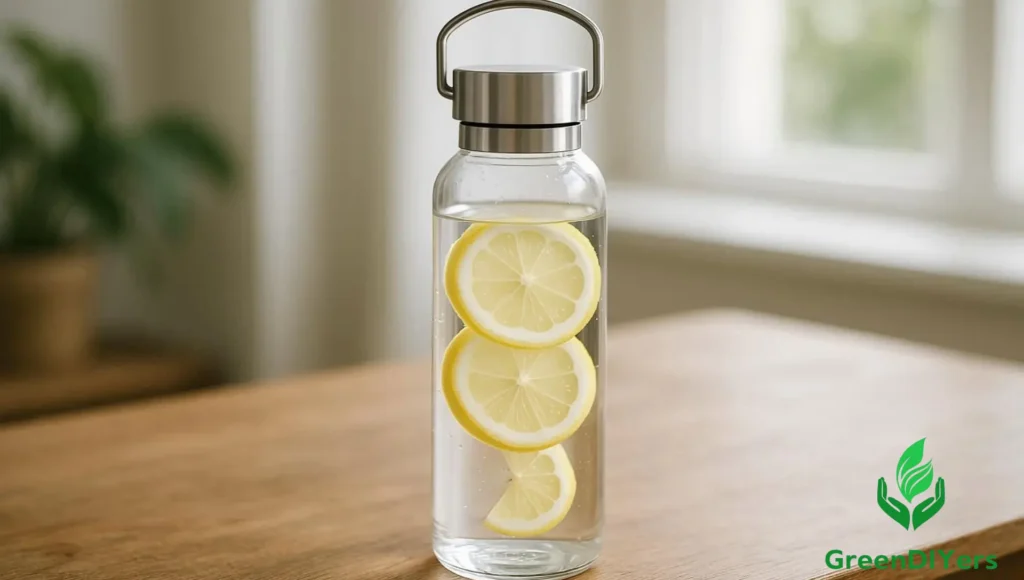
What Really Happens After You Recycle?
Tossing your plastic bottle in the recycling bin feels good, but do you know what actually happens next? The recycling journey is more complex than most people realize.
Collection and Sorting: Your bottle joins millions of others, getting sorted by type, color, and quality. Contamination at this stage can send entire batches to landfills.
Cleaning and Processing: Bottles are cleaned, chopped into flakes, melted down, and reformed into pellets. This process requires significant energy and water.
New Products: Those pellets become new bottles, clothing, carpets, or other plastic products. However, plastic bottles rarely become new bottles – most become “downcycled” into lower-quality products.
Recycling Myths vs. Reality
Myth: All plastic bottles can be infinitely recycled. Reality: Plastic degrades with each recycling cycle. Most bottles can only be recycled 2-3 times before the material quality becomes too poor.
Myth: As long as it goes in the recycling bin, it gets recycled. Reality: Contamination, market conditions, and facility capabilities all affect whether your bottle actually gets recycled.
Myth: Smaller bottles are just as recyclable as larger ones. Reality: Very small bottles (under 3 inches) often fall through sorting equipment and end up in landfills.
Maximizing Your Recycling Impact
Clean Before You Toss: Remove all liquid and food residue. You don’t need to make it spotless, but empty and rinse.
Keep Caps On: Modern facilities can handle bottles with caps attached, and it prevents the caps from becoming litter.
Don’t Crush Length-wise: Crushing bottles side-to-side is fine, but length-wise crushing can cause sorting problems.
Know Your Local Rules: Recycling programs vary significantly. Check your local guidelines for specific requirements.
Section 4: The Art of Upcycling & Creative Reuse
Why Upcycling Beats Recycling
Before you toss that plastic bottle in the recycling bin, consider this: upcycling gives your bottle a second life without the energy-intensive recycling process. Plus, it’s an opportunity to get creative and save money on household items.
Simple Starter Projects
Self-Watering Planters: Cut a bottle in half, invert the top portion into the bottom with the cap-end down, thread a string through the cap opening, and you’ve got an automatic watering system for herbs or small plants.
Organization Solutions: Large bottles with the tops cut off make perfect desk organizers, tool holders, or craft supply containers.
Bird Feeders: With a few strategic holes and some wooden spoons, any plastic bottle becomes a backyard bird feeder.
Safety First in DIY Projects
When cutting or modifying plastic bottles:
- Use sharp, clean tools to prevent cracking
- Sand rough edges to prevent cuts
- Work in well-ventilated areas
- Supervise children closely during any cutting activities
Beyond Basic Crafts
For the more ambitious upcyclers:
- Vertical Gardens: String multiple bottles together for space-saving planters
- Storage Systems: Create custom organizers for garages, closets, or workshops
- Educational Tools: Make science project materials or teaching aids
Section 5: Sustainable Alternatives – Moving Beyond Plastic
The Reusable Revolution
The most impactful change you can make? Stop buying single-use plastic bottles altogether. Here’s how to choose the best reusable option for your lifestyle:
Stainless Steel:
- Pros: Durable, excellent temperature retention, naturally antimicrobial
- Cons: Heavier, can dent, more expensive upfront
- Best for: Hot and cold beverages, active lifestyles, long-term use
Glass:
- Pros: No taste transfer, completely recyclable, easy to clean
- Cons: Heavy, breakable, poor insulation
- Best for: Home and office use, people sensitive to tastes
Silicone:
- Pros: Collapsible, flexible, dishwasher safe
- Cons: Can retain odors, limited insulation
- Best for: Travel, space-saving storage, occasional use
Water Quality Solutions
One of the biggest barriers to ditching bottled water is taste and quality concerns about tap water. Here are proven solutions:
Filtration Systems:
- Carbon filters remove chlorine taste and odors
- Reverse osmosis systems provide bottled-water quality
- UV filters eliminate bacterial concerns
Water Testing: Before investing in filtration, test your water to understand what you’re actually dealing with. Many municipal water supplies are already high quality.
The Economics of Going Reusable
Let’s talk numbers. The average American spends over $300 annually on bottled water. A quality reusable bottle and filtration system typically costs under $100 and lasts for years. The math is clear – going reusable saves significant money while helping the environment.
Supporting Sustainable Innovation
When you do need to purchase packaged beverages, look for:
- Brands using recycled content in their bottles
- Companies with bottle return programs
- Products in alternative packaging (aluminum, glass, plant-based materials)
- Local companies reducing transportation impacts
Taking Action: Your Plastic Bottle Game Plan
Understanding plastic bottles is just the first step. Real change happens when you put knowledge into action. Here’s your roadmap to making a positive impact:
This Week:
- Audit your plastic bottle usage – track how many you use in a week
- Invest in a quality reusable water bottle
- Test your tap water quality
This Month:
- Try at least one upcycling project with bottles you would normally recycle
- Research local recycling guidelines and improve your recycling habits
- Calculate your annual bottled water costs to motivate the switch to reusables
This Year:
- Aim to reduce your single-use plastic bottle consumption by 80%
- Support businesses and brands prioritizing sustainable packaging
- Share your knowledge with friends and family
The Future of Plastic Bottles
Innovation in the packaging industry is accelerating. We’re seeing promising developments in:
- Plant-based plastics that biodegrade more readily
- Chemical recycling technologies that can handle mixed plastic waste
- Deposit return systems that dramatically increase recycling rates
- Refill infrastructure making reusables more convenient than disposables
Policy changes are also driving improvements. Plastic bottle deposit laws, single-use plastic bans, and extended producer responsibility programs are changing how companies think about packaging.
Your Next Steps Matter
Every plastic bottle decision you make – whether to buy, reuse, upcycle, or recycle – has consequences that ripple far beyond your immediate needs. By understanding the full story behind these ubiquitous containers, you’re equipped to make choices that align with your values and contribute to solutions rather than problems.
The goal isn’t perfection – it’s progress. Start with small changes that fit your lifestyle, then build on your successes. Whether that means finally investing in that reusable water bottle you’ve been considering, trying your first upcycling project, or simply becoming more mindful about recycling, every positive action counts.
Remember, you’re not just making better choices for yourself. You’re part of a growing movement of conscious consumers driving demand for more sustainable solutions. Companies are listening, innovators are responding, and change is happening faster than ever before.
The plastic bottle story doesn’t have to end with pollution and waste. With the right knowledge and actions, it can become a story of innovation, responsibility, and positive environmental impact. The next chapter starts with your next choice.

